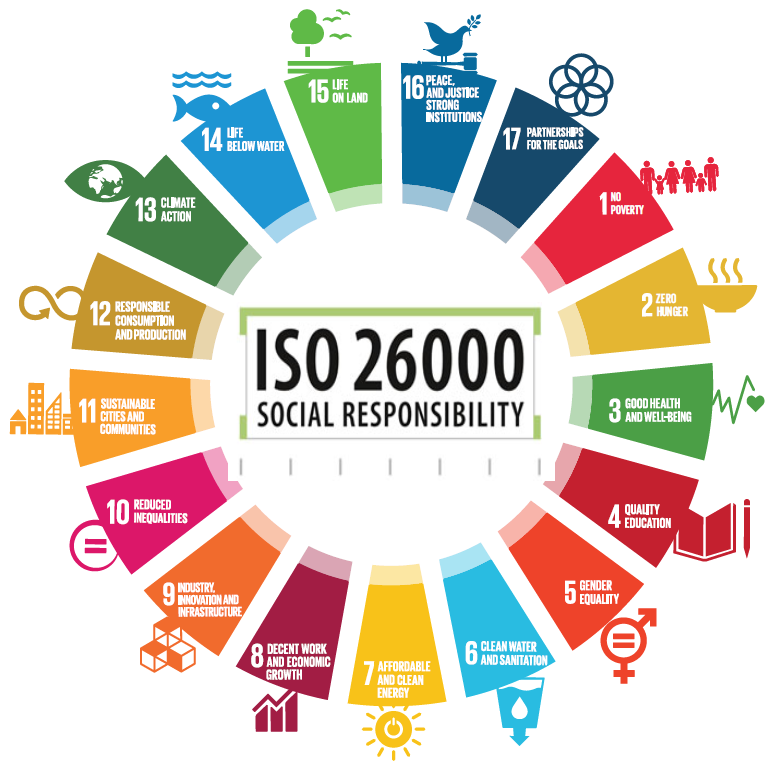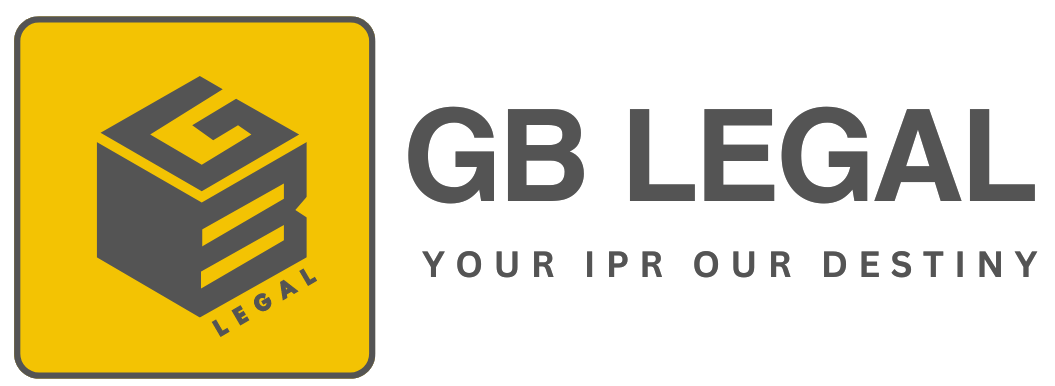An Overview:
Management standards are frameworks devised by the International Organization for Standardization (ISO) for businesses to operate more effectively. A third-party certification, such as our ISO certification in India, proves that you are following ISO management standards. A certified organization is more credible. A federation of national standards bodies, ISO (International Organization for Standardization) is an international organization. Organizations are involved in the development and promotion of international standards related to technology, scientific testing processes, working conditions, and societal issues. ISO and its member organizations sell the documents which detail these standards.

How to get ISO Certification in Mumbai?
In case you are wondering how to obtain ISO Certification in Mumbai, you have reached the right place. You can obtain this certification with ease by working with GB Legal Associates. ISO Certification Cost in Mumbai varies according to the number of employees and type of business. Furthermore, the company should be operating under a standard that is already set up with a lot of good processes and procedures in place. Once this is in place, the cost of certification could drastically decrease and ISO accreditation would become very easy to achieve. ISO Certification costs will likely increase if a company operates through all three shifts since both the consultant and auditor will have to train and counsel employees during all three shifts. Additionally, if the company operates in multiple locations, the certification cost will increase since the consultant and auditor have to go to each location to perform implementations and audits. We conduct a free gap analysis for businesses to ensure that ISO Certification Cost in Pune is affordable for the clients.
What is ISO 9001:2008?
Quality Management Systems (QMS) are defined by ISO 9001:2008, an international standard for quality management systems. ISO 9001:2008 ensures the management of your business active ties to achieve customer satisfaction consistently.
As ISO 9001:2008’s management requirements are underpinned by eight principles, any organization can benefit from implementing it:
Organizations that focus on their customers
Inspiring leadership
People’s participation
Making sure processes are followed
Approaches to management that are systematic
A fact-based approach to making decisions
Relationships with suppliers that benefit both parties
Improvement over time
Customer satisfaction
By delivering consistently high-quality products to customers
Operational costs reduced
Improved processes and operational efficiency are the results of continual improvement
Relationships with stakeholders improved –
This includes staff, suppliers, and customers
Compliance with legal requirements –
The organization and its customers need to understand how statutory and regulatory requirements impact them.
Management of risks improved –
By improving product and service consistency and traceability
A track record of success –
Verification based on recognized standards by a third party
Increased ability to win business –
Where ISO certification is a requirement for supply, particularly in procurement specifications
What is ISO 50001:2011?
The international standard ISO 50001:2011 governs energy management. An accredited company has demonstrated its commitment to energy management through certification to this standard. A certificate to this standard provides organizations with a robust framework for optimizing their energy performance. Implementation of a standard will allow an organization to show leadership within the industry and ensure regulatory compliance.
Implementing this standard can result in cost and energy efficiencies for organizations of all types and sizes.
Energy efficiency can result in significant financial savings.
The ability to market more effectively. The ability to distinguish yourself from the competition.
The ISO 50001 energy management standard is one of the most robust in the world, allowing organizations to continue improving their energy efficiency.
A legal and regulatory compliance program can help organizations ensure compliance
Integrating ISO 50001 with existing management systems; ISO 50001 is compatible with existing management systems.
To register to ISO 14001, the ‘basic framework’ is already present
Set up an energy management system by best practices
Bills and expenditures can be easily managed within the framework of BS EN 16001.
What is ISO 14001:2004
ISO 14001 is the principal standard governing Environmental Management Systems. It specifies requirements for the development and maintenance of an EMS, and it is one of the major standards in management systems. The ISO 14001 standard outlines three key factors that should be included in a comprehensive environmental policy.
Containment of pollution
Complying with the law
The EMS must be continuously improved
Improvements in environmental performance are driven by these commitments.
It is appropriate for organizations of all sizes, types, and sectors to utilize this standard to improve their environmental performance.
Top management commitment leads to improved environmental performance
Through improved energy and water efficiencies as well as waste minimization, cost savings can be realized
Regulatory bodies are prevented from taking enforcement action and/or incurring unnecessary clean-up costs as a result of a reduced pollution incident risk.
New legislation needs ample time to be developed to address relevant issues by law
Reduction in the risk of failure to comply with legislation and subsequent costs/prosecutions
The organization’s brand will improve as customers will see that it is conscientious of its environmental impact.
Communication and focus on environmental issues have been improved
Customer satisfaction and cost reductions led to increased profitability
What is ISO/TS 16949?
The International Standard for Quality Management (ISO/TS 16949) was specially written for the Automotive Industry. Since its introduction, TS 16949 has resulted in significant improvements in quality, delivery, and overall efficiency throughout the supply chain. In addition, manufacturers no longer have to undergo multiple audits.
Throughout the automotive supply chain, the standard applies to organizations that produce parts and/or add value to parts for the automotive industry.
An industry benchmark recognized and accepted by the entire automotive supply chain – certification is recognized and accepted worldwide as a reputable supplier.
Customer satisfaction is achieved by consistently delivering products that meet the needs of customers
Reduced audit requirements – resulting in a single management system and reduced cost of compliance with customer specifications.
Operational efficiencies and continual process improvements will result in reduced operating costs
Enhanced stakeholder relations – including employees, customers, and suppliers
Knowing the impacts of legislation and regulations on the organization’s customers ensures legal compliance
Better management of risk through more consistent and traceable products and services
Credentials that have been independently verified against widely accepted standards
More business – particularly if the procurement specifications require certification before contracting
ISO 18001
In place of OHSAS 18001 is ISO 45001, the new international standard for occupational health and safety management. As of March 2021, organizations that are certified under OHSAS 18001 will need to migrate to ISO 45001. You now have six extra months to complete your migration (until the end of September 2021) if COVID-19 has disrupted your business and you have not been able to migrate.
You will recognize many of the principles from HSAS 18001 in ISO 45001, but a number of improvements are included in ISO 45001 including stronger leadership, more worker involvement, and a focus on health, particularly mental health.
Particularly when it comes to international bidding
As part of ESG benchmarking, ISO 18001 demonstrates commitment to social sustainability, thus attracting shareholder investment.
Supporting the Sustainable Development Goals (SDGs) of the United Nations
Talent attraction and retention
Enhancing health and well-being in the workplace
Reputation building for your organization
The provision of a healthy, injury-free work environment is also essential
Organizations worldwide have realized the need to improve health and safety performance and have implemented occupational health and safety management systems (OHSMS). There were, however, more national standards and proprietary certification schemes before 1999. As a result, confusion and fragmentation prevailed in the market, undermining the credibility of individual schemes.
As a result of this gap, an international collaboration known as the Occupational Health and Safety Assessment Series (OHSAS) Project Group was formed to develop a single, unified approach.
The OHSAS Project Group was composed of representatives from national standards bodies, academic institutions, accreditation bodies, certification bodies, and occupational safety and health institutions, with the UK’s national standards body, BSI Group, providing the secretariat.
Borrowing from existing standards and schemes, the OHSAS Project Group published the OHSAS 18000 Series in 1999. The OHS Series consists of two specifications: 18001 outlines requirements for an OHS management system, while 18002 provides guidelines for implementation
What is ISO/IEC 27001:2005?
ISO 27001, an international standard for information security management systems, governs Information Security Management Systems (ISMS). With ISO 27001, an organization’s information security measures are ensured by a technology-neutral, vendor-neutral management system. Unlike other management systems standards such as ISO 9001 and ISO 14001, ISO 27001 is structured to be easily compatible with them.
Who is ISO 27001 applicable to?
Any business or organization that could suffer major losses due to the misuse, alteration, or destruction of its customer or business information should implement measures to prevent such losses and install the ISO 27001 standard. Nonprofits have enrolled with NQA to receive ISO 27001 certifications in diverse industries like storage, warehousing, waste management, telecommunications, advertising, financial advisory, and software development.
How does ISO 27001 benefit organizations?
The satisfaction of customers
by giving confidence that their personal information is protected and confidentiality upheld
Continuity of operations
Compliance with legal requirements, risk management, and vigilance of future security threats
Observance of legal requirements
Considering how your company and your customers are affected by statutory and regulatory requirements
Better management of risks
Through a systematic process to safeguard customer records, financial information, and intellectual property against loss, theft, and damage
Credentials that demonstrate business success
In compliance with recognized standards, independent verification is performed
What is ISO 22000:2005?
ISO 22000 is the International Food Safety, Management Standard. Combining ISO 9001 and HACCP, this framework provides a framework for establishing, implementing, and improving a Food Safety Management System (FSMS).To promote effective integration of systems, ISO 22000 is aligned with other management systems, including ISO 9001 and ISO 14001.
Any organization involved in the food chain can implement the ISO 22000 standard, including:
Farmers, fishermen, and dairy farmers
Animal feed, meat, and fish processors
Bakeries and cereal producers, beverage manufacturers, canneries, and freezer manufacturers
Hospitals, hotels, and restaurants providing food service
Supporting services such as packaging and food storage as well as additives, raw materials, cleaning and sanitizing products, and other products related to food processing
To summarize, any product that comes in contact with the food chain or the food industry will be subject to the ISO 22000 requirements.
Satisfaction with customers:-
Product quality, safety, and legality are consistently met by providing products that satisfy customer requirements
Operating costs have been reduced:–
Increased food safety management system effectiveness through combining pre-requisite programs (PRP and OPRP), HACCP with ISO 9001’s Plan-Do-Check-Act philosophy
Relationships with stakeholders improved:-
This includes staff, suppliers, and customers
Compliance with legal requirements:-
By Internal audits and management reviews for testing compliance with statutory and regulatory requirements and understanding how they impact the organization and its customers
Management of risks improved:-
A more consistent and traceable product
Credentials that demonstrate business success:-
By recognized standards, independently verified
Increased business opportunities:-
In procurement specifications, certifications are a requirement for supply
What is ISO 26000:2010?
Guidelines for social responsibility in ISO 26000. Social responsibility is governed by the ISO 26000 standard. Organizations using it are provided with an overview of the principles and core topics they should be managing to identify and manage a wide range of societal risks and impacts. Among the topics covered by the guidance are:
- Governance of Organizations
- Human Rights
- Occupational Safety and Health
- Climate Change
- Operating practices that comply with fairness
- Problems faced by consumers
- Development and involvement of the community
- As a private, public, and nonprofit organization,
- No matter how large or small.
- No matter where they are located, especially in developing countries,
- Social Responsibility (SR) is a topic that affects both those just beginning to implement it and those who are seasoned experts.
- The ISO 26000 standard can be of benefit to organizations that are involved in social responsibility on multiple levels.
- Improving compliance with legislative and other requirements will be improved by identifying and meeting current and future legislative requirements

What is ISO 13485:2003?
Specifically for the production of Medical Devices, ISO 13485 is a standard for Management Systems. Its primary objective is to achieve harmonized regulatory requirements. The standard defines specific requirements for manufacturing, installation, and servicing medical devices, including:
All organizations operating at any level of the medical device and pharmaceutical supply chain must comply with the requirements of ISO 13485. This information is particularly relevant to manufacturers who wish to demonstrate that their products comply with applicable regulatory requirements, as well as to organizations that provide support services to medical device makers.
Satisfaction of customers
Delivering products in a manner that consistently meets customers’ requirements as well as safety, quality, and legal requirements
Operational savings
Improved processes and resulting efficiencies are the results of continual quality improvement. Better customer, employee, and supplier relationships will enhance the business.
Compliance with legal requirements
Having a thorough understanding of how statutory and regulatory requirements affect an organization and its customers
Credentials proved in the business world
Based on independent verification according to recognized standards
Increasing your chances of winning more business
It is especially important to have certification requirements for suppliers in highly regulated sectors



